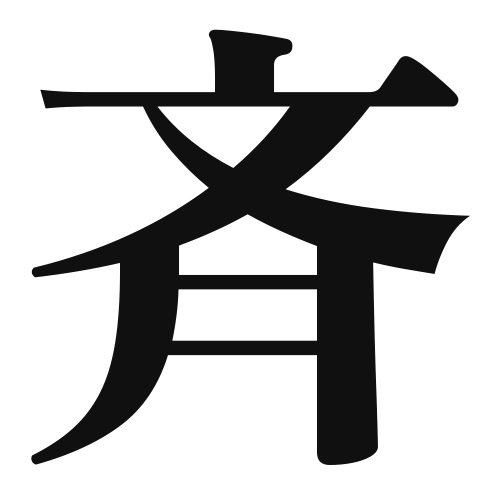1. Overview of Meaning
The kanji “斉” (pronounced “sei” or “sai”) generally means “to be equal” or “to be uniform.” It conveys the idea of harmony and balance, often used in contexts related to equality or alignment.
2. Formation and Radical
Formation of the Kanji: The kanji “斉” is a phonetic compound (形声文字) that combines the meaning of the radical and a phonetic component. The left part, “斜” (meaning “slant”), contributes to the overall meaning of alignment, while the right part provides the pronunciation.
Radical: The radical for “斉” is “斜” (meaning “slant” or “oblique”), which relates to the visual representation of balance and alignment.
3. Examples of Usage
Common Words and Phrases: Some frequently used words that include “斉” are “斉唱” (seichou – to sing in unison) and “斉一” (seiichi – uniformity).
Example Sentences in Daily Conversation:
- 私たちは斉に歌うことができます。(Watashitachi wa sei ni utau koto ga dekimasu.) – We can sing in unison.
- このチームは斉一に働いています。(Kono chiimu wa seiichi ni hataraiteimasu.) – This team works uniformly.
4. Synonyms and Antonyms
Similar Kanji: A similar kanji is “同” (dou), which also means “same” or “together,” but it emphasizes the aspect of sameness rather than alignment.
Antonyms: An antonym is “異” (i), which means “different” or “unlike,” highlighting the contrast to the idea of uniformity.
5. Cultural and Historical Background
Relation to Japanese Culture: The concept of “斉” is significant in Japanese culture, particularly in practices that emphasize harmony, such as traditional music and group activities.
Proverbs and Idioms: One relevant proverb is “斉心協力” (seishin kyouryoku), which means “to work together with a united spirit,” reflecting the importance of unity and cooperation in Japanese society.
